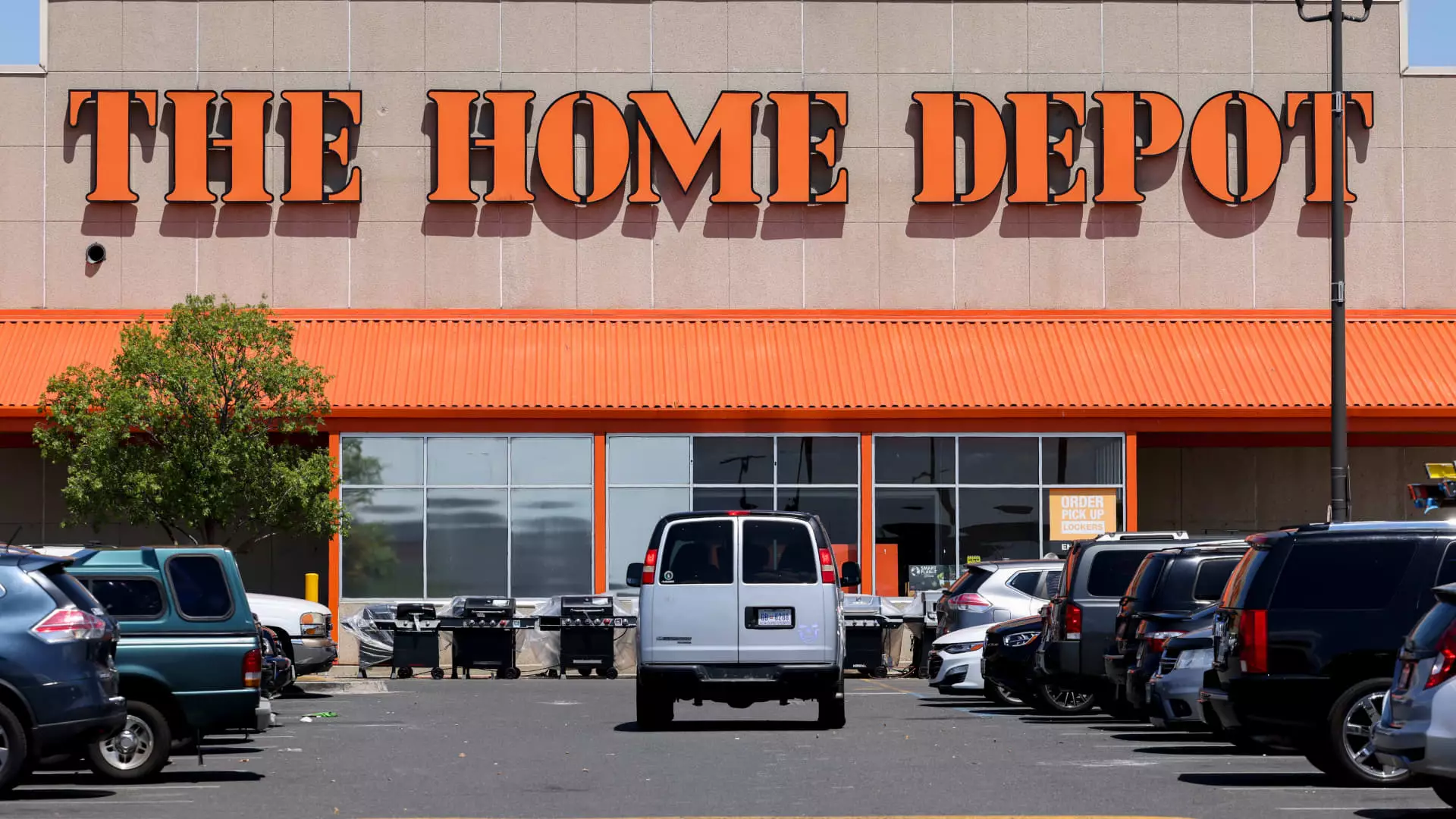As economic conditions evolve, investors are continually assessing opportunities in various sectors, including housing and retail. Recently, Home Depot has emerged as a focal point for investors attempting to capitalize on anticipated shifts in the housing market due to fluctuating interest rates. Last week, we initiated positions in Home Depot, acquiring an initial 50 shares at approximately $362 per share, followed by an additional 50 shares a few days later at a slightly increased price. The investment narrative surrounding Home Depot provides a lens into the complexities of current market dynamics, particularly in light of its performance which has been somewhat lackluster compared to the broader S&P 500 gains.
Home Depot’s stock performance has oscillated significantly throughout the year, reflecting the tumultuous nature of investor sentiment regarding the housing market and interest rate policies. After witnessing a rally that peaked at $395 in March—fueled by optimistic projections of multiple Federal Reserve interest rate cuts—the stock’s value plummeted to approximately $325 by May, illustrating a marked shift in market expectations. This rollercoaster highlights the nuanced interplay between macroeconomic indicators and specific stock performance.
At the core of our investment thesis is the expectation that lower borrowing costs will eventually stimulate housing turnover, thereby benefiting companies like Home Depot that depend heavily on home improvement sales. The historical data indicate that when mortgage rates fall within a certain range—typically between 5% and 6.5%—there is a notable surge in housing activity. This trend is supported by statements from Home Depot’s CEO, Ted Decker, who noted an uptick in mortgage applications and refinancing efforts when rates dipped below 6.5% in the latter part of last year.
Recently, mortgage rates have shown signs of a downward trend, falling to 6.29%. This decline has sparked a modest increase in total mortgage demand, up by 1.4%, alongside a 1% rise in refinancing applications. While these numbers may seem trivial, they are indicative of shifting consumer behavior and potential for a stronger market recovery. Doug Yearley, CEO of Toll Brothers, further posits that if the Federal Reserve executes several interest rate cuts, we could soon see mortgage rates with a 5% prefix, potentially igniting a more substantial recovery in the housing sector.
It’s important to acknowledge that a decrease in mortgage rates typically does not yield immediate benefits for Home Depot; there is usually a lag period before the effects of reduced borrowing costs manifest in consumer spending on home improvements. Closing a home purchase and planning subsequent renovations often takes weeks, if not months. While our analysis anticipates improved conditions ahead, immediate results may be delayed as consumers await a more favorable lending environment.
Moreover, while the retail sector may be facing pressures from a cautious consumer landscape, the unique characteristics of housing demand often set it apart from broader retail trends. Increased home equity—rising by nearly $18 trillion since 2019—has created a favorable backdrop for Home Depot’s recovery strategy. Decker emphasized the implications of this equity surge during a recent investor conference, noting that the available tappable equity via home equity lines of credit (HELOC) stands around $11 trillion. This data strengthens the argument for a forthcoming resurgence in the home improvement market.
In the face of these dynamics, one question arises: Why choose Home Depot over its main rival, Lowe’s? Both companies possess strategic merit; however, Home Depot’s enhanced focus on professional customers stands out as a key differentiator. Earlier this year, Home Depot reinforced its professional services segment through the acquisition of SRS Distribution for over $18 billion, signifying its commitment to professional-grade building supplies. This strategic move opened up an additional $50 billion in addressable market potential, further solidifying Home Depot’s competitive edge.
Additionally, the company’s dividend yield of approximately 2.4% positions it favorably for income-seeking investors, which may become increasingly relevant as interest rates continue to affect equity valuations. Although Home Depot has paused its stock buyback efforts until 2026 due to funding the SRS acquisition, the company’s historical commitment to share repurchase programs may reignite once fiscal conditions improve.
While Home Depot faces challenges with declining comparable sales and a marketplace that is yet to fully recover, strategic positioning and a recovery in housing market activities could lead to substantial improvements in the future. Our optimistic price target of $420 per share reflects our belief in the potential for a robust rebound facilitated by lowering interest rates. As housing turnover begins to normalize, now is the opportune moment to consider exposure to quality players like Home Depot. With both macroeconomic indicators and company-specific developments aligning favorably, investing in Home Depot seems like a strategic choice amidst the current economic flux.

